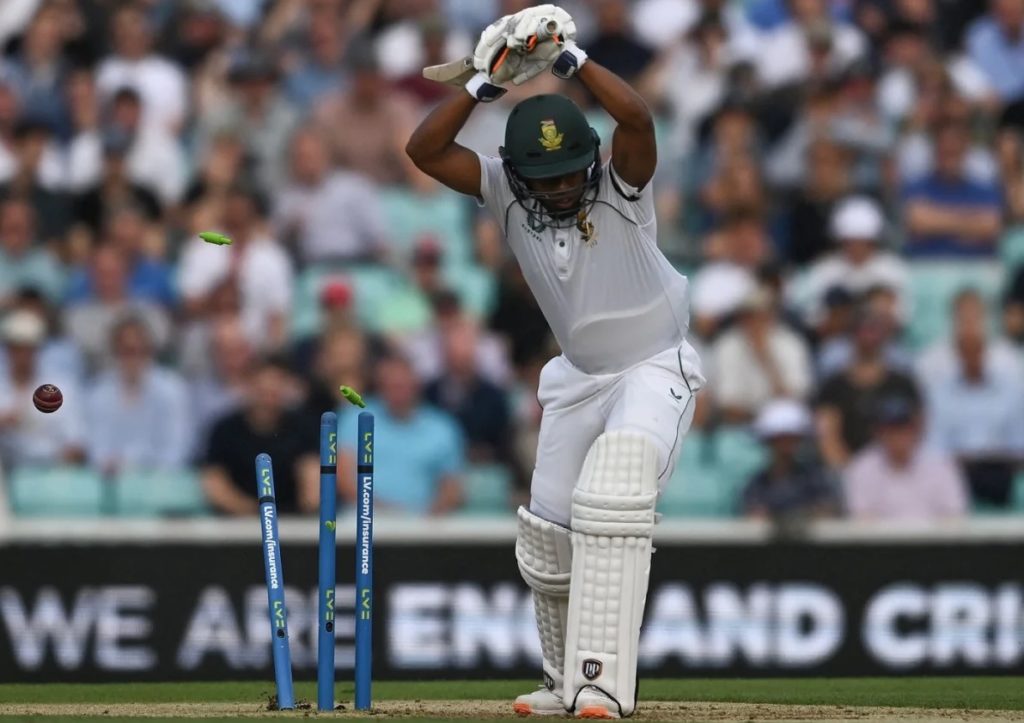There has been widespread skepticism of England’s Bazball, but it is better to be committed to having an identity than to having none like the Proteas do, writes RYAN VREDE.
Grit is not a tactical identity. It is an essential prerequisite for all Test- match players.
Yet, it appears the Proteas have confused this quality for a tactical philosophy. This was evident throughout the second and third Tests against England, which they lost in just over three days by an innings and 85 runs and nine wickets, respectively.
In those Tests (four innings) they failed to score more than 180. The highest score by a South African batsman across those four innings was 42. This is plainly unacceptable.
Yet, it wasn’t solely about the failure in this regard, it is the manner in which they failed. The tactical passivity that masqueraded as grit, particularly from the specialist batsmen, defined all four of those innings.
It would be remiss not to praise England’s excellent seamers, particularly the veteran pair of James Anderson and Stuart Broad, for their performances. But they were bowling at batsmen with no discernable plan to rotate the strike. Occupying the crease in the hope that momentum swings your way is a dated strategy.
In the first Test, which the Proteas won, the average strike rate of the top six was 55. In the first innings of the second Test, that average strike rate dropped to 45.38. In the second it was an embarrassing 33.17. It got even worse in the first innings of the third Test, with the top six’s average strike rate settling at 32.55, before touching 50 in the second dig.
The defining characteristic of all four innings was how the pressure created by a static scoreboard resulted in wickets, and often a clutch of them in succession.
In the first innings in Manchester, the Proteas lost five of their six specialist batsmen for 76 runs. In the second innings, they lost their last seven wickets for 38 runs. At The Oval, the top six contributed identical totals of 47 runs in both innings.
I tweeted that they were “the real deal” in the wake of their victory in the first Test. Time has revealed that appraisal is premature. Their bowling attack stands up to the format’s best, but their batting lineup is among the format’s most inconsistent, and, more concerning, tactically devoid of any identity.
Skipper Dean Elgar blamed inexperience for their dramatic regression after the first Test. This has some credibility, but it doesn’t explain why they looked like they had no discernable batting plans for the majority of the second and third Tests. Inexperience will reflect itself in a myriad ways, but there is no legitimate excuse for strike rates that would embarrass even the most ill-equipped Test side.
There is an urgent coaching intervention needed to remedy this deficiency.
There is a place in Test cricket for resilience. Indeed, it is one of the features that make the format intriguing. But there is nothing to celebrate about innings that struggle to touch a strike rate of 40 when you’re trying to win a Test match. That is simply a failure of players and coaches to prepare adequate tactical rebuttals.
The ultra-aggressive nature of Bazball is likely to be exposed by elite attacks, as it was by the Proteas at Lord’s. I’d be surprised if it was a sustainable tactical philosophy. This is not what I’m calling for from the Proteas.
What we need is a clear batting identity that isn’t rooted in prolonged survival. Batsmen need to be equipped with innovative ways to get off strike when they’re under pressure.
Critically, they need to display an intent to do so, not be lame ducks waiting to be picked off after a period of resistance.







